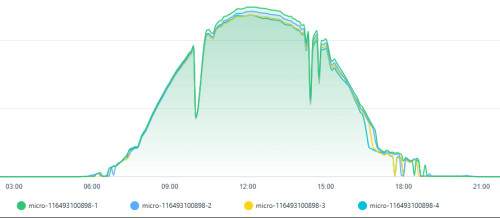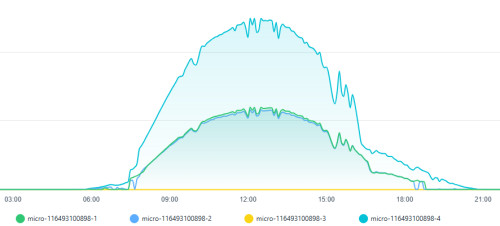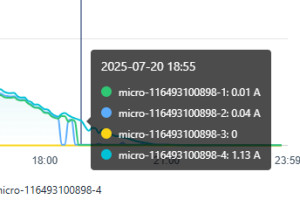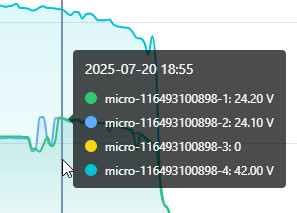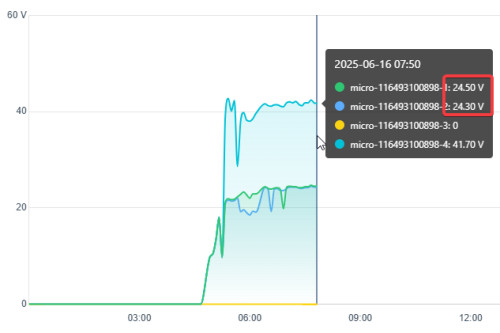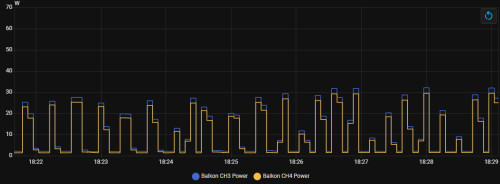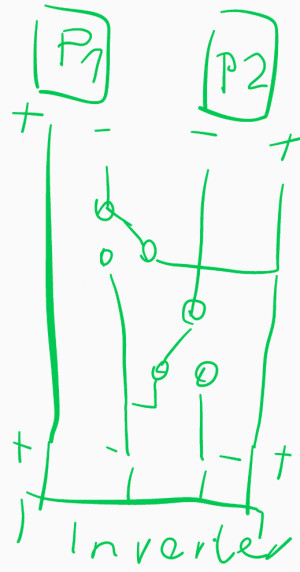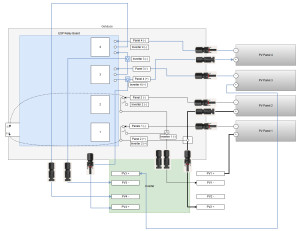HMS-2000-4T: MPPT range 16~60V incorrectly specified?
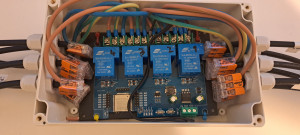
The MPP tracker of the HMS-2000-4T struggles with the correct voltage setting, especially but not only at low power levels. Spoiler: Hoymiles support was not willing to take the problem seriously for over 10 months after countless tickets, so I mitigated the misbehavior with an ESP32 microcontroller. Update September 2025: Hoymiles has confirmed the problem and is working on a new firmware that is supposed to fix the problem. The firmware should be available in the next few months: it remains exciting.
If the open-circuit voltage is below 25V, the inverter does not even attempt to generate a current
In the mornings and evenings and occasionally on very hot days, the HMS-2000-4T does not generate any electricity for me. The PV panels are all mounted at exactly the same angle and have no shading. In the following example, the output drops abruptly in the evening after 18:00:
To test the problem a little, I disconnected the PV panel on channel 3 and connected it in series to channel 4 so that the voltage on channel 4 doubles, which illustrates the problem very well, here is a day with similar solar radiation:
While a current of 1.13A is flowing for the two panels on channels 3 and 4, the inverter has already deactivated the two panels on channels 1 and 2:
Panels 1 and 2 have an open-circuit voltage of 24.2 V at this point. If the inverter were to set the MPP to 21 V (half of 42 V), 24 watts could be generated per channel (the current in a series connection is known to remain the same). This means that 96 watts would not be generated for 4 channels.
MPPT from 16V: Not with my device!
According to the data sheet, the MPPT range of the inverter is 16-60V, but the inverter only starts generating from an open circuit voltage of 25V:
24.5V is too low: channels 1 and 2 do not generate any current:
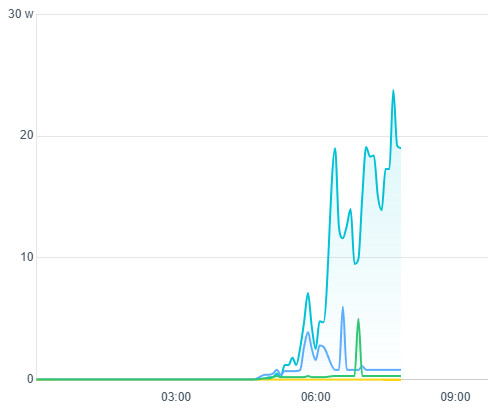
Here is also the behavior on a hot, cloudless day: First channel 4 repeatedly fails, then channel 3 only supplies a little over 2 watts for a longer period of time:
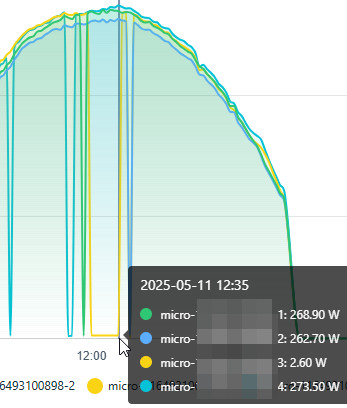
When trying to connect both series-connected modules in parallel to the inverter on two channels - so that the current is split - the MPP tracker can't cope either: with this variant, the two channels obviously influence each other:
As I have registered the inverter to 2kW, I cannot currently switch to a model from another manufacturer: New registrations for 2KW micro inverters have expired in Austria. After various tickets with Hoymiles support, I no longer expect a solution after 10 months:
ESP32 and relay: that can't be the solution, can it?
Although I had the idea relatively early on, I didn't want to go down this route for a long time. At some point I got fed up with the Hoymiles support and out of desperation ordered an ESP32 microcontroller with integrated relay.
The idea is that the microcontroller uses a serial circuit when there is little sunshine and connects the modules individually to the 4 channels above a certain power.
First I ordered an ESP32 with 4 integrated 30A relays and tested it:

4 Channel WiFi Bluetooth Relay Module DC...
So that I can manage with 2 relays for 2 channels, I have come up with the following circuit:
Works so far, but the permanent connection from panel 2 to channel 2+ on the inverter means that the voltage is not quite constant when connected in series:
An alternative circuit for combining the two (-) poles of the inverter did not work either: The full power was not drawn:
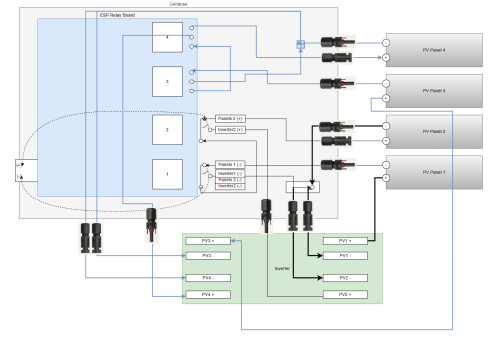
I think for the circuit to work properly, 3 relays are needed for each of 2 channels: 
So I ordered an additional 2-channel relay board:

30A 1 2 4 Channel Relay Module High Low ...
With a total of 6 relays, should the circuit work?
I'll keep you posted on whether the circuit works with 3 relays ...
Operating the ESP32 directly via a PV panel without a battery
To make matters worse, the ESP is also causing problems: The microcontroller does not start in the morning because I supply it with power directly via one of the PV panels. Only when it is connected to the PV panel during the day, it does its job. For this reason, I am currently testing a battery monitor: The microcontroller should only start from a certain voltage:
By all appearances the solution is slowly becoming more complicated than expected ...
 ({{pro_count}})
({{pro_count}})
{{percentage}} % positive
 ({{con_count}})
({{con_count}})
